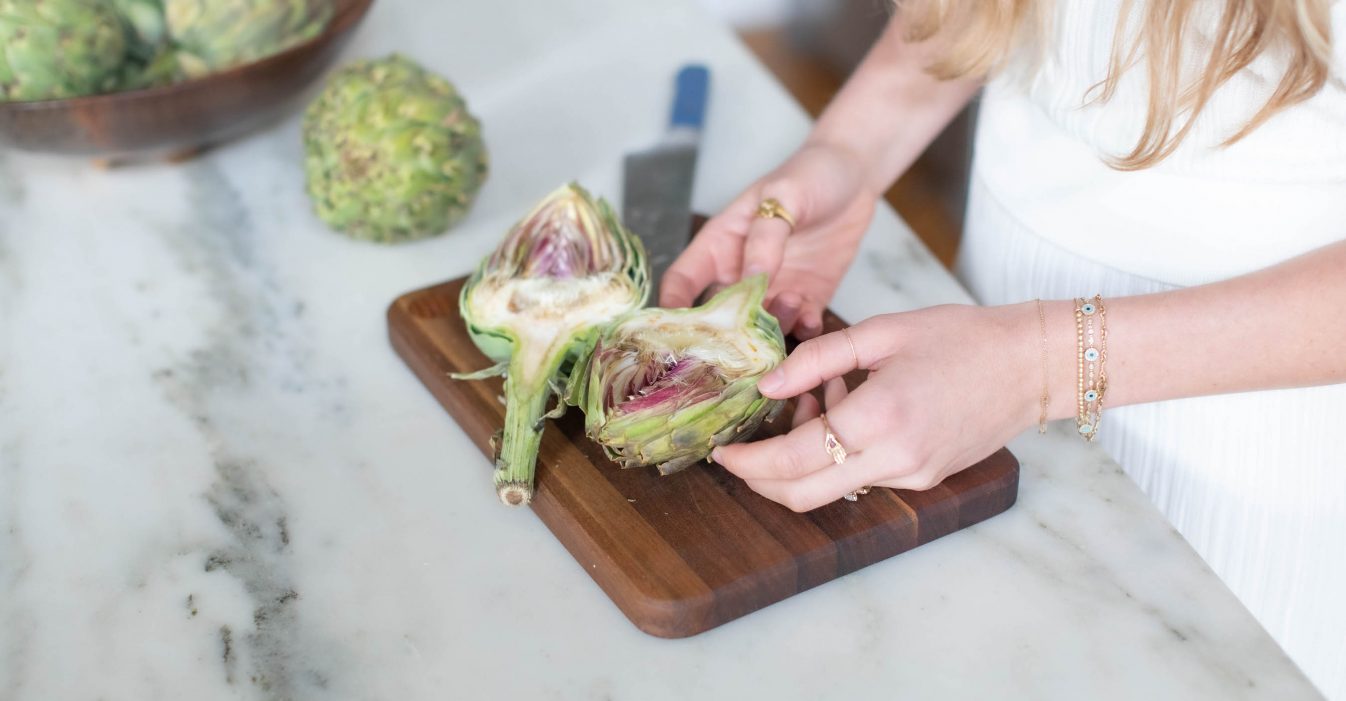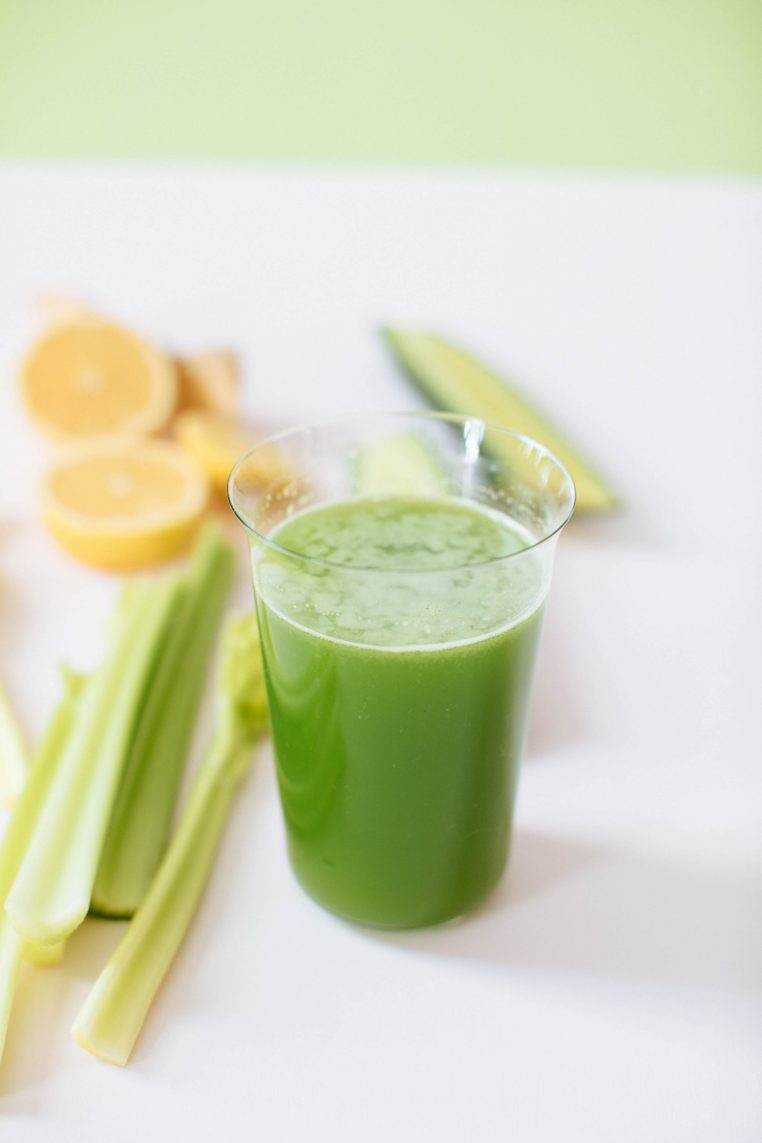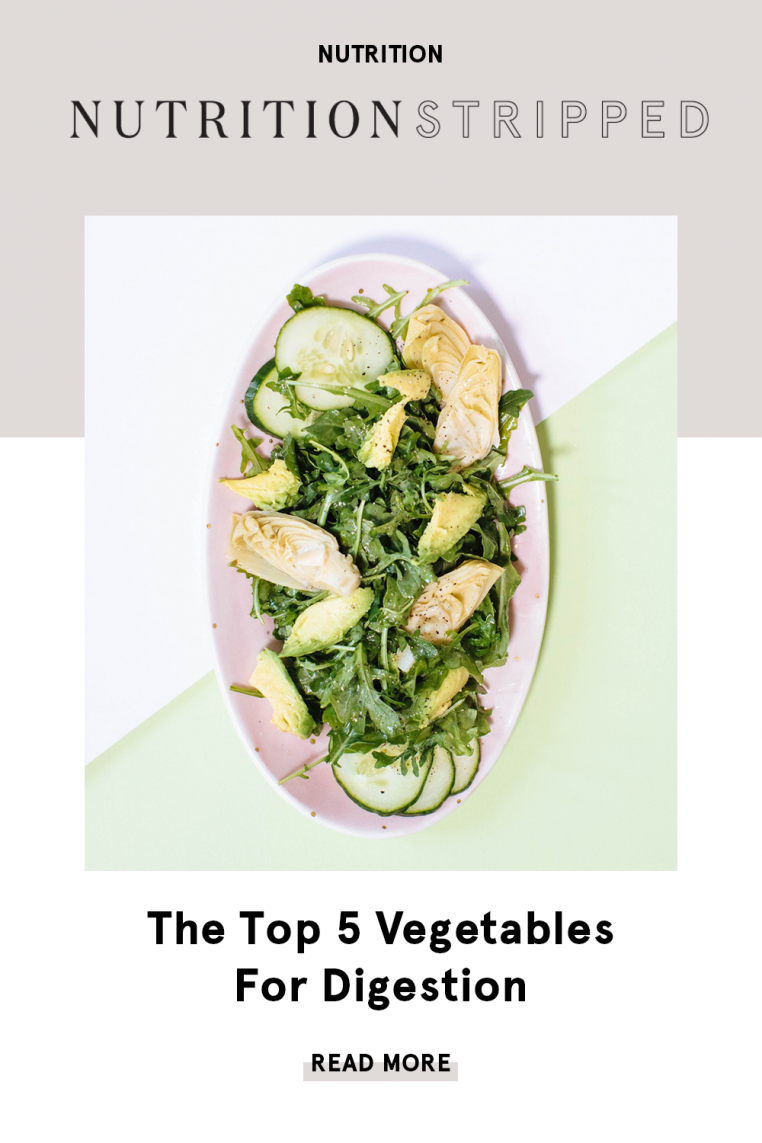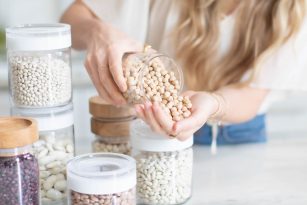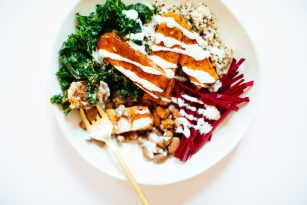Including a variety of top vegetables for digestion in your diet is a great way to boost your body’s ability to process nutrients efficiently.
Whether it’s bloat, gas, frequent bathroom breaks, or constipation, achieving healthy digestion is one of the most popular topics with my clients and our community.
While I already discussed the fiber-rich fruits that help to keep your system flowing, now it’s time to talk about a handful of vegetables that can help improve digestion. Both fruits and vegetables are known for their fiber content, but there are some key veggies that have a “special” effect on digestion.
Depending on your unique digestive system, gut microbiota, and tolerance to fiber, eating too much fiber can either leave you feeling very full and possibly constipated or with frequent bathroom breaks. The key when boosting fiber in your diet is to take it slow and steady, give your body enough time and space to get used to the increase in fiber.
Learn a few of the best vegetables for digestion that you may want to consider incorporating into your daily diet to optimize gut health.
How Vegetables Support Digestion
We all have heard how important fiber is to our digestive system. Fiber acts as a little broom that sweets your intestines and colon of bacteria and helps keep things moving through your intestines, which is important to prevent constipation and it also helps your body signal to you that you’re full!
Depending on what your body needs, fiber can help put your bathroom breaks on a more regular schedule by either relieving constipation or helping to soak up extra water that could lead to diarrhea.
In general, fiber is found mostly and most abundantly in fruits, vegetables, and legumes — if you’re eating a whole food diet you’re most likely getting plenty of fiber.
One disclaimer here: if you’re not eating a diet that’s rich in fiber currently, go slowly with introducing fiber-rich vegetables and foods because too much fiber initially when you’re body isn’t used to it can also contribute to digestion. (Many times when people are starting a plant-based diet, they experience bloating or gas because they’ve introduced so many new whole foods and vegetables to their diet. Incorporate them little by little and your body will adjust.)
1. Artichokes For Digestion
Just one medium artichoke has nearly seven grams of fiber! It’s also incredibly versatile and easy to include in your weekly meal plan. Try adding it to a salad, adding it to a stir-fry, to soup, or making a variation of a classic cashew cheese dip with artichokes to give it a fiber boost!
Artichokes have several special traits that make these vegetables good for digestion. In fact, these leafy bundles also provide prebiotics, which allows the good bacteria in your gut to flourish. You need prebiotics (and probiotics) to help your gut stay healthy. More recent studies are also continuing to unravel the link between gut health and so many conditions, including anxiety, inflammation, obesity, and diabetes (1).
Studies show that artichokes can actually help control symptoms of irritable bowel syndrome, including stomach aches, bloating, and frequent bathroom visits (2). Artichokes have also been shown to protect the liver, which is important for nutrient absorption and fat digestion (3).
Recipe to Try: Vegan Creamy Spinach and Artichoke Dip
2. Greens For Digestion
All of those leafy vegetables you add in your salads not only provide heaps of vitamins, minerals, phytonutrients, and antioxidants but also contain a lot of fiber, too. A cup of collard greens, for example, has seven grams of fiber, while a cup of cooked kale has about five grams.
Research has unearthed a close link between leafy greens like spinach and digestion.
Greens contain a type of fiber known as insoluble fiber, and though that sounds like that would make these vegetables that are hard to digest, it actually helps get your intestines to push waste through your GI tract and out of the body. Pretty cool, huh? Think of insoluble fiber as a more solid source of fiber that helps add bulk to stool because it doesn’t dissolve in water. Meanwhile, soluble fiber is more like a gentle broom sweeping out your intestines — it forms a soft gel when combined with water, like chia seed pudding.
Remember, greens also go well in a salad, but you can also try adding a couple of handfuls to your morning smoothie, to a stir-fry, stew, soup, or stuffed in a sandwich.
Recipe to Try: Ultimate Greens Breakfast
3. Squash For Digestion
No matter which type of squash you choose—acorn, butternut, yellow, or green—you’ll find a decent amount of fiber. Acorn squash actually dishes up about nine grams of fiber and zucchini provides about one gram in a single cup.
These easy to digest vegetables provide both insoluble and soluble fiber, but it’s mostly the soluble fiber that shines through. This type of fiber dissolves in water, which means if you’re having loose stools or diarrhea, it can help keep it under control.
So, the next time you have squash at home, try roasting it, using it as a “bowl” for stuffed squash, pureeing it for a mash (like mashed potatoes), adding it to a Nourish Bowl, to smoothies (yes, seriously!), or mixing it into soup. There are so many ways to enjoy squash and this fiber-rich vegetable.
Recipe to try: Mashed Roasted Sweet Potatoes (Substitute squash instead and follow the same recipe!)
4. Broccoli For Digestion
In addition to containing five grams of fiber in one cup of cooked broccoli, this veggie may also help your digestion by protecting your gut microbiome, which is the mix of healthy bacteria in your gut. In an experiment conducted on mice, researchers found that broccoli activated a receptor in the gut that helped reduce inflammation (4). This is especially beneficial for people with digestive conditions, like colitis.
Most of my members who join The Method with digestive problems often have issues tolerating hard to digest vegetables like broccoli when raw. It causes a lot of bloating, gas, and sometimes makes their stomachs very bloated and distended. In order to combat that and still get the nutrition punch and fiber boost that broccoli has to offer, simply cook it!
Try broccoli steamed or roasted with a splash of balsamic vinegar, gluten-free soy sauce and olive oil (my personal favorite). Alternatively, enjoy it steamed, add it to green smoothies, or pulse it into a fine “rice” to cook like a stir-fry.
Recipe to try: The Best Roasted Broccoli Ever
5. Celery For Digestion
Celery is mostly water, so why is it great for digestion? Filled with antioxidants, anti-inflammatory nutrients, and soluble and insoluble fiber, you get an array of health benefits with celery. Just one stalk contains around one gram of fiber, plus a whole host of other vitamins and minerals.
A type of polysaccharide (or sugar) in celery can also improve the lining of your stomach and reduce stomach ulcers. To top it off, celery is made up of about 95 percent water so it can help improve hydration. The more water you consume, the better everything moves through your system. Hydration is key, friends!
Recipe to try: Celery and Olive Salad
Cook Your Vegetables for Better Digestion
Some people actually have a difficult time digesting raw vegetables. This is because of a fiber called cellulose, which can be difficult for your body to break down. However, if you cook vegetables, it actually makes it easier to digest veggies.
So if you have any issues eating raw vegetables, give them a quick cook! Sauté, roast, blanch, or steam — whichever method you choose to use to cook your vegetables will work to help them move more easily through your system.
Checkout these resources that can help you with your cooking skills!
- How to Cook Any Vegetable (And Make it Delicious!)
- 6 Healthy Cooking Techniques Every Beginner Chef Should Know
Put This Into Practice
Not only do these healthy veggies provide a host of important vitamins and minerals, but they can also support overall digestive health as well. Plus, they’re versatile, full of fiber, and easy to enjoy as part of a well-rounded, nutrient-rich diet. Try incorporating them into your favorite meals or cooking them for a simple side dish during the week! There are endless ways to include these healthy ingredients in your weekly routine.
Do You Want to Experience More Balance with your Food Choices?
Then find your balanced eating type!
Take this 45-second free quiz to find out which balanced eating archetype you are, and what your unique type needs to maintain balance with the way you nourish yourself. That way, you can finally be free from food and diet obsession, maintain a balanced weight, and cultivate a positive relationship with food and your body.

